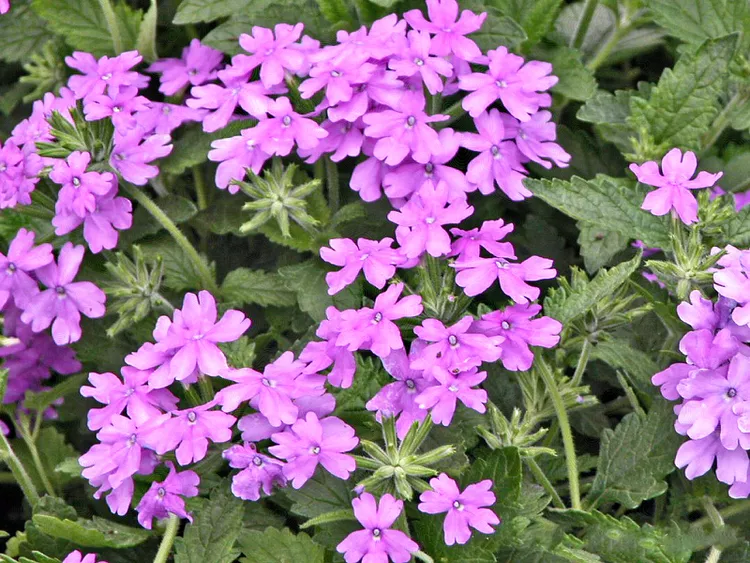
Description
Vervain, or verbena, is a plant that is typically grown as an annual hybrid flower garden plant and low trailer with elongated, serrated leaves that are dark green in color. Only in zones 8 to 11 do they thrive as hardy perennials, returning year after year. They thrive in eight to ten hours of full sun, moderately moist, well-drained soil, and sufficient air circulation between plants. Their vibrant blossoms bloom constantly from spring to autumn.
Habitat
While Verbena officinalis, sometimes known as common verbena or vervain, is the type species endemic to Europe, the bulk of the species are native to the Americas and Asia.
Uses
It is from the parts that grow above ground that medicine is made. Verbena is used to treat heart problems, depression, moderate gum disease (gingivitis), swelling (inflammation) of the sinuses and nasal cavity (rhinosinusitis), and other diseases.

Varieties
The distinct flowers colors of the several hybrid verbena cultivars are used to identify them. Here are a few significant selections:
One cultivar that has contrasting white eyes and vivid purple flowers is called “Lanai Royal Purple with Eye.”
‘Lanai Twister Pink’ features low-trailing plants with dual-toned light and dark pink blooms.
The “Superbena” series is designed to withstand powdery mildew, and it can occasionally reach as far north as zone 7 before becoming a transient perennial. Flowers are lavender or white in color.
Plant Care
- Light
Put verbena in direct sunlight. Eight to ten hours a day is preferable for this plant, although six hours is plenty. Shaded areas will have significantly less flowering.
- Soil
These plants prefer somewhat acidic to neutral pH (5.8 to 7.2) soil that is relatively dry. Verbena doesn’t mind the type of soil as long as it drains properly. Dig several shovelfuls of compost or leaf mound into deep soils to help lighten it since too much clay can cause root rot.
- Water
The water requirements of many of the parent species of these hybrids are similar to those found in arid prairies and Mediterranean regions, where they are native. When fully grown, these plants require half to one inch of water each week on average, but they can withstand brief dry spells. Once a plant is established, keep it equally moist. Botrytis blight can kill sodden plants, while spider mites may be drawn to plants that are stressed by drought.
- Temperature and Humidity
Hybrid verbenas, when planted as annuals, thrive in almost any climate but may wither during the hottest summer months. Most hybrids are hardy in zones 8 to 11 when cultivated as short-lived garden perennials, but some are hardy as low as zone 7.
- Fertilizer
Although verbenas don’t require much fertilizer, plants can benefit from a monthly application of balanced, slow-releasing flower fertilizer to maintain their blooms, which can persist until the first frost. Use a water-soluble fertilizer during the growing season if the plants are being grown in containers. Refer to the product label for advice on how much fertilizer to use.
Table





